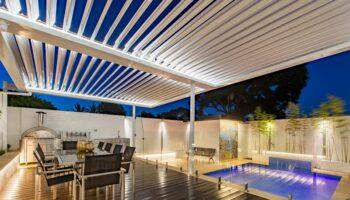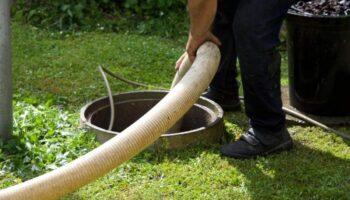Composite decking is increasingly being used instead of wood for its many benefits. One of the features of composite decking is that it can be made from different materials hence affording consuming several varieties of composite decking options.
In general, there are three types of composite decking as categorized by their constituent materials which include:
Wood-Plastic Composite Decking (Polyethylene)
As the name clearly shows, this type of composite decking is constructed from an amalgamation of wood and plastic. It is often a 50-50 combination.
The design of this type of composite decking makes it more durable than natural wood but on the other hand it is made to appear just like wood. It requires incredibly low levels of maintenance.
Capped Composite Decking (Polypropylene)
Capped composite decking is wood-plastic composite decking with an added layer of polymer shell protective coating on all sides of the board. The added layer of protection against the elements elongates the lifespan of the board.
Capped composite decking is a bit dearer than wood-plastic composite decking due to its increased durability. You can get the best composite decking from companies such as Deckorum.
Plastic Lumber (Polyvinyl Chloride)
Plastic lumber as the title suggests is completely made from recycled plastic i.e. it contains absolutely no wood. When contrasted to the other forms of composite decking, it is the most durable of them all.
The reason is because plastic lumber is stain free and is water resistant. Therefore, it does not develop any mold or sustain damage from harsh weather.
Since it is made from recycled plastic, it is considered to be extremely environmentally friendly. Moreover, it can be made to mimic actual wood with the options of a smooth or grainy exterior.
The increased resistance to the elements, lower levels of maintenance and durability means that it is more expensive than any other composite decking material.
Once you choose the constituent material of your composite decking boards, you will then decide whether you want solid or hollow boards. Both options function well ad is appealing so your choice is simply a matter of personal preference.
Hollow composite Decking
Hollow boards have spaces between them that appear like ribbed centers. One advantage of hollow boards is that they are light which makes installing them easy especially if you do it yourself. Their light weight nature also makes them cheap and easy to transport.
Moreover, you plan to use your deck as an entertaining space, you can use the spaces in the boards for wiring. Hollow composite decking also withstands adverse weather conditions better than solid boards.
Hollow boards are grainier than solid boards and have a more uniform finish. The choice is ultimately up to the buyer’s preferences.
Solid Composite Decking
Solid boards are of course heavier and look more authentic than hollow boards. Their sold nature also allows them to handle more weight than hollow boards ideal if you want to place items on the deck.
Solid boards produce less noise when walking on them and can be altered with numerous wood grain variations. On the contrary, solid boards cannot handle harsh weather as well as hollow boards can.
Since more material is used to make them than hollow boards, solid boards are more expensive. If in need of a composite decking, then Deckorum will help you achieve this.






